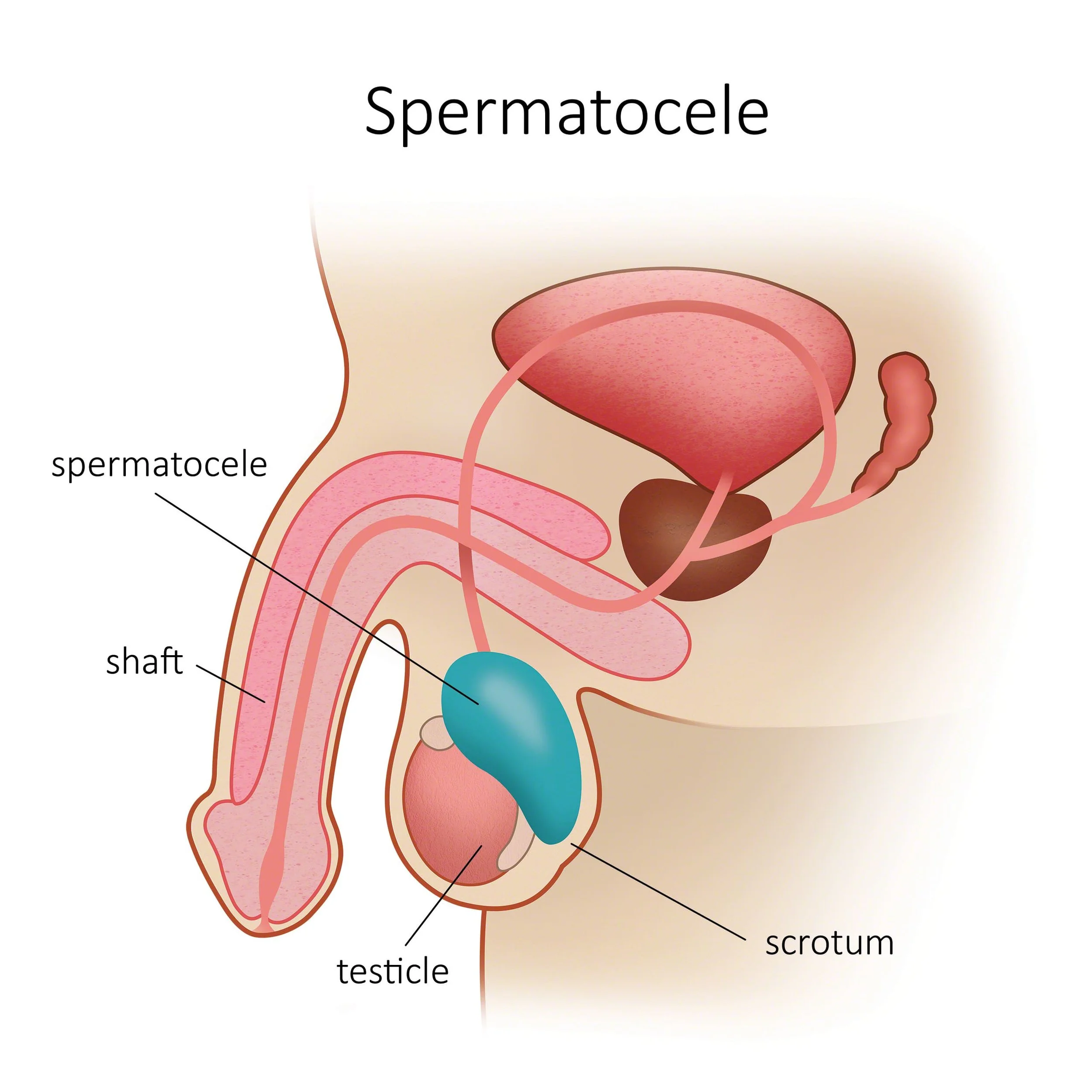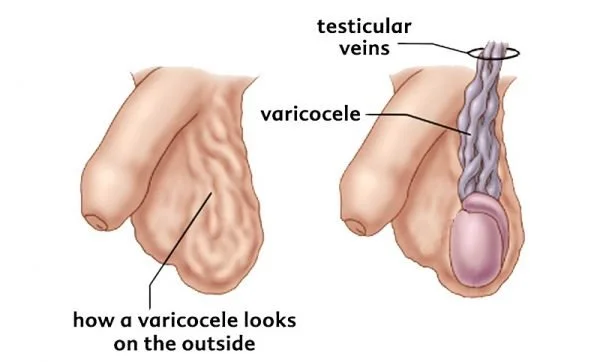Penile and Scrotal conditions
Phimosis
Phimosis
Phimosis is a condition where the foreskin of the penis is tight and difficult to retract over the head (glans).
It is a common condition in infants and young boys but can persist into adulthood, causing potential issues.
Balanitis Xerotica Obliterans (BXO) is a rare chronic, progressive skin disorder affecting the genitals.
BXO can lead to scarring of the foreskin and cause phimosis, making it difficult to retract.
Symptoms of phimosis include pain, swelling, and difficulty with hygiene.
Phimosis may be physiological in infants but can be pathological and require treatment in older individuals.
Treatments include topical steroids, or circumcision (surgical removal of the foreskin).
Regular medical check-ups are essential for proper diagnosis and management of these conditions.
Frenulum breve
short frenulum (frenulum breve)
The frenulum is an elastic fold of skin located on the underside of the penis, connecting the glans (head of the penis) with the inner surface of the foreskin, aiding foreskin retraction.
A short frenulum, or frenulum breve, is when the frenulum of the penis is so short that it restricts the movement that the foreskin can make.
It restricts foreskin movement, causing discomfort during sexual activity and complicating hygiene maintenance, elevating the risk of infections.
Symptoms include difficulty retracting the foreskin, pain, and tension in the penis, with increased discomfort during sexual intercourse, potentially leading to tearing and bleeding.
Diagnosis involves a physical examination by a doctor to distinguish it from conditions like phimosis, often mistaken due to the common symptom of unretractable foreskin.
Treatment is recommended if the short frenulum hinders sexual function or causes notable issues; options include steroid creams, stretching exercises, and surgical interventions.
A torn frenulum occurring during sexual activity might resolve the issue as it heals, but scar tissue formation can exacerbate the problem.
Surgical solutions, such as reparative plastic surgery (frenuloplasty), frenulum resection (frenectomy), or circumcision, are considered in severe cases to address the condition effectively.
Hydrocoele
Hydrocoele
A hydrocele of the testis is a condition characterized by the accumulation of fluid in the tunica vaginalis, a sac surrounding the testicle, leading to painless swelling in the scrotum.
This common condition often presents as a smooth and painless enlargement of the scrotum, with the swelling varying over time.
Hydroceles are more prevalent in newborns, and in many cases, they resolve spontaneously within the first year of life.
The development of a hydrocele can be attributed to factors such as injury, inflammation, infection, or congenital issues, resulting in the fluid-filled sac around the testicle.
While hydroceles are typically benign, they may persist in adulthood, requiring medical evaluation and treatment options, including drainage of fluid or surgical intervention.
In some instances, a small hydrocele causing no significant symptoms may not necessitate treatment.
Aspiration (drainage) with a needle is an option for removing the fluid, but it is not recommended as the fluid tends to re-accumulate quickly. Seeking medical advice for appropriate management is crucial in such cases.
Surgical intervention, such as hydrocelectomy, may be recommended for larger or symptomatic hydroceles. This procedure involves draining the fluid and surgically closing the opening to prevent re-accumulation, providing a more permanent solution to the condition.
It's important to consult a healthcare professional if scrotal swelling or discomfort is observed for proper diagnosis and management.
Epididymal cysts
Epididymal cysts
Epididymal cysts are typically non-cancerous fluid-filled sacs found in the epididymis, located behind the testicle.
Common among men aged 20 to 40, these cysts are often asymptomatic and may be discovered incidentally during routine examinations or imaging tests.
The size of epididymal cysts can vary, and they generally grow slowly, causing little to no discomfort.
Transillumination, a diagnostic technique involving shining light through the scrotum, can help differentiate epididymal cysts from other testicular conditions.
Diagnosis involves a combination of physical examination, medical history review, and sometimes imaging tests like ultrasound.
While most epididymal cysts do not necessitate treatment, surgical intervention may be considered if they cause significant pain or discomfort.
Conservative management, including pain relief medications, is often recommended for symptomatic relief.
Surgical removal of cysts is rare and reserved for cases with severe symptoms or concerns about other underlying conditions. After surgical removal, the likelihood of recurrence is low. Regular monitoring may be advised for persistent symptoms or the development of new cysts over time.
Varicocoele
varicocoele
Varicoceles are abnormal enlargements of the veins within the scrotum, often resembling a bag of worms.
Typically occurring on the left side due to anatomical differences, varicoceles can also develop on the right or both sides of the scrotum.
Most varicoceles are asymptomatic but can cause discomfort or pain, especially after prolonged standing or physical activity.
Varicoceles are more common in men aged 15 to 25 and are often associated with male infertility.
Diagnosis involves a physical examination, often described as a "bag of worms" feeling during palpation, and may be confirmed through imaging studies like ultrasound.
Treatment options range from conservative measures (e.g., scrotal support) to surgical intervention, especially if the varicocele causes pain or fertility issues.
Varicocelectomy, the surgical removal or ligation of the affected veins, is a common procedure for symptomatic varicoceles.
While varicoceles are generally not a serious health threat, they may require attention if associated with fertility problems or persistent pain. Regular monitoring and evaluation by a healthcare professional are advised in such cases.
Penile and scrotal skin lesions
penile and scrotal skin lesions
The skin of scrotum and penis are susceptible to various skin conditions that can range from benign to potentially discomforting or concerning. Understanding these conditions is essential for prompt recognition, proper diagnosis, and appropriate medical attention when necessary.
Sebaceous Cysts: These are non-cancerous, closed sacs or cysts beneath the skin filled with oily or waxy material, commonly found on the scrotum or penis. They may appear as small, painless bumps.
Scrotal Calcifications (Calciphylaxis): While more commonly associated with other areas, calcifications can occur in the scrotum. Calciphylaxis is a rare condition characterized by calcium deposits in blood vessels, leading to skin lesions and ulcerations.
Genital Warts (Human Papillomavirus - HPV): HPV can cause the development of warts on the genital area, including the scrotum and penis. These warts can vary in size and appearance.
Jock Itch (Tinea Cruris): This fungal infection can affect the skin of the scrotum and groin, causing redness, itching, and a rash. It is commonly seen in individuals who sweat heavily in the genital region.
Psoriasis: Psoriasis can affect the skin on the penis and scrotum, leading to red, scaly patches. It is an autoimmune condition characterized by the rapid buildup of skin cells.
Lichen Sclerosus: This chronic skin condition can affect the genital area, causing thin, white patches. It may lead to itching, pain, and scarring over time.
Contact Dermatitis: Irritation or an allergic reaction to certain substances, such as soaps, detergents, or latex, can cause redness, itching, and swelling on the scrotum and penis.
Pearly Penile Papules (PPP): These small, dome-shaped bumps around the edge of the penis head are harmless and not a result of sexual activity. They are a normal variation and not associated with any infection.
Fordyce Spots: These are small, yellowish or flesh-colored bumps that can appear on the shaft of the penis or the scrotum. Fordyce spots are sebaceous glands without hair follicles and are considered a normal variation. While harmless, some individuals may seek cosmetic treatment for their removal.





